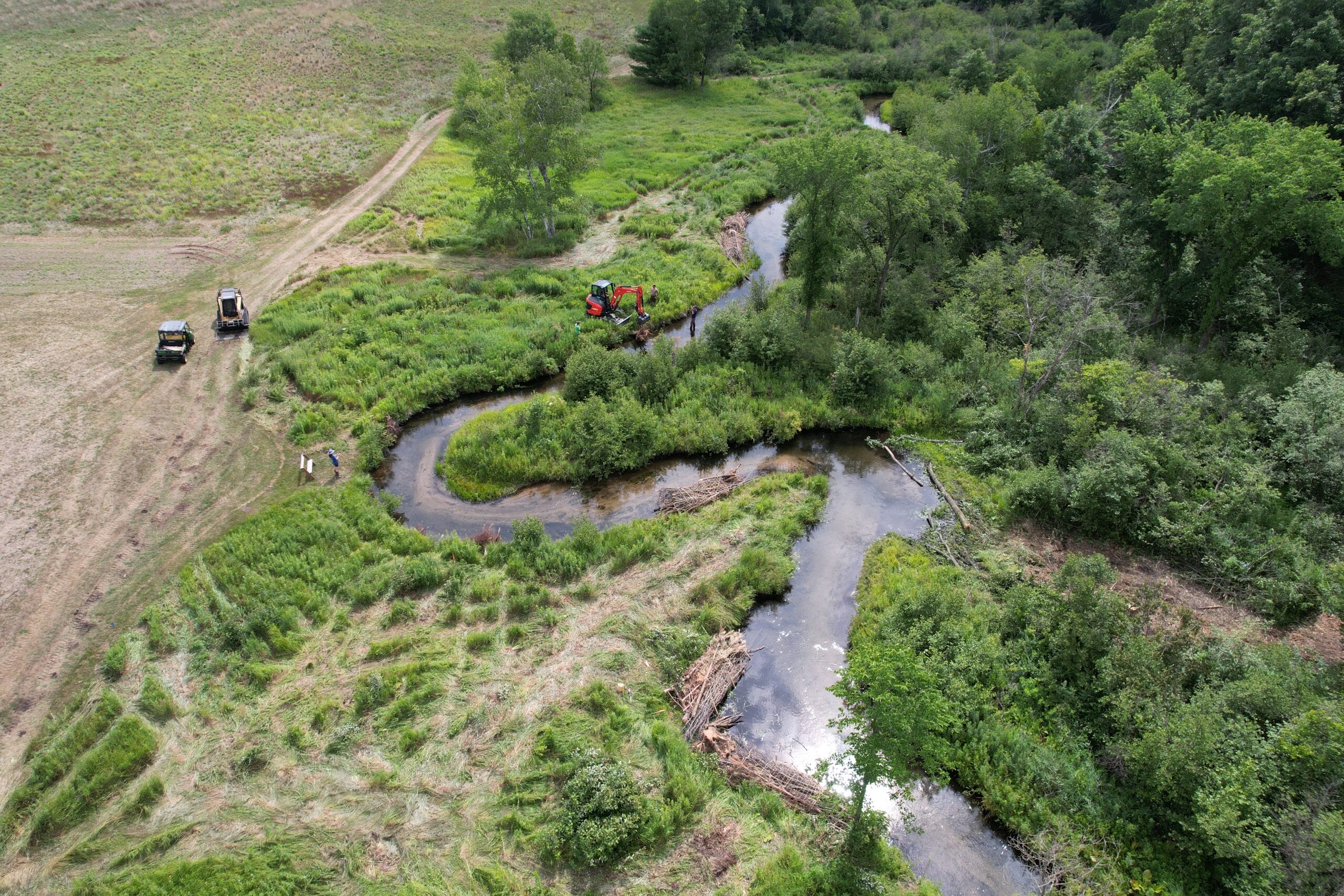Wedde Creek wood project a natural fit for Wisconsin landowner
Many anglers have heard the common refrain “Wood is good; foam is home.”
It is sound advice when fly fishing, helping one to think like a trout and increasing the odds of catching them.
Resource managers think about this saying too, and TU staff recently took it to heart to enhance Wedde Creek in Wisconsin’s Central Sands region, partnering with landowner Tom Gross on a project to improve trout habitat and reduce erosion on a 1,600-foot-long stretch of the creek.
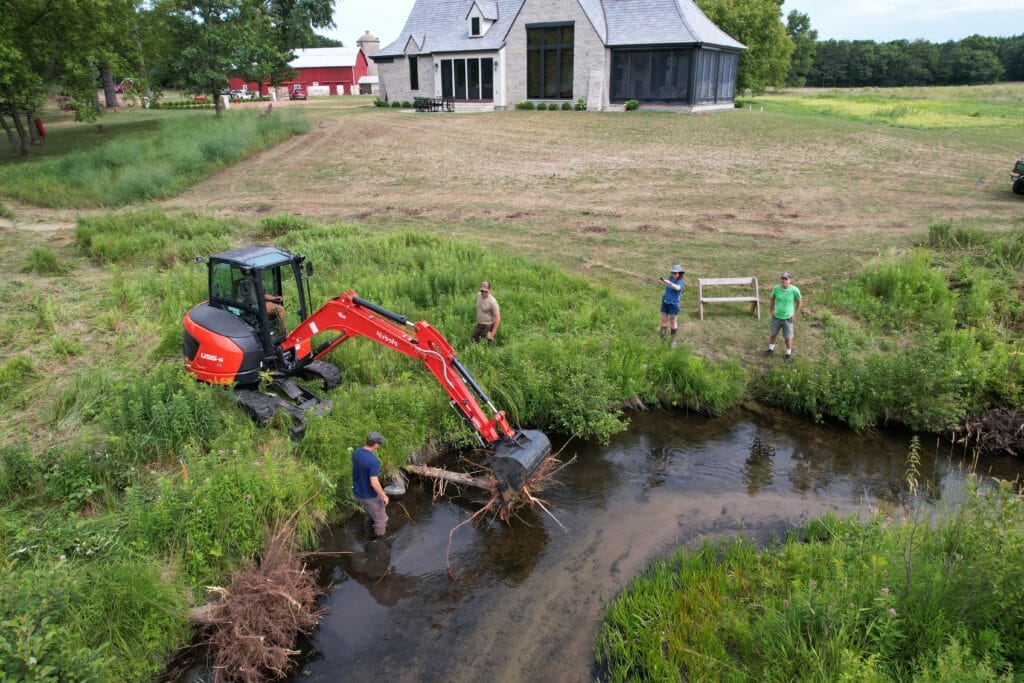
Wood is good for many reasons. Leaves and branches break down in the water and become the foundation of the aquatic food web. Insects feed on leaves or twigs in the water and then trout and other fish eat these insects. Dead trees in the water create complexity in the stream by helping to form deep cold pools, uncovering gravel substrates and storing sandy sediment.
Logs also provide diverse habitats and overhead cover for fish and insects. The morphology, or shape of a stream, is influenced by woody material.
Wood has always been a natural and critical piece of stream habitat. Unfortunately, the trees along our rivers today are relatively young and natural recruitment into the stream has decreased, thus resulting in streams lacking this important component. That’s why TU staff encourage the strategic addition of wood structures to improve the health and quality of coldwater trout streams.
Gross owns a beautiful 68-acre property in Marquette County. Wedde Creek, a Class II trout stream and tributary to the Mecan River, winds through the property.
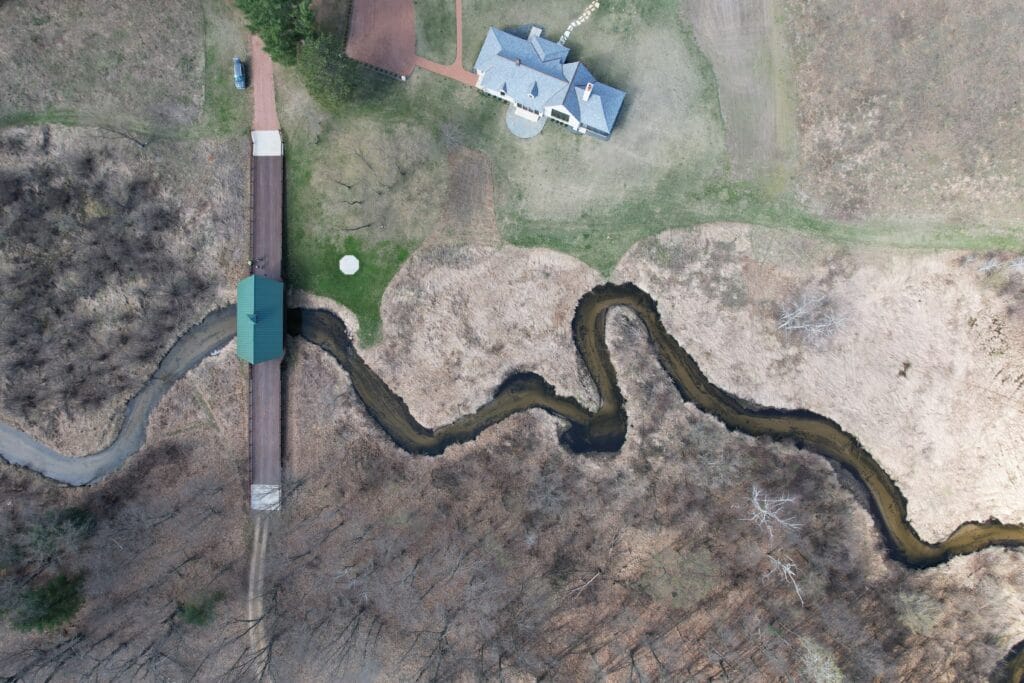
Environmental conservation is important to Gross, and he has been working for years with Brendan Woodall of the U.S. Fish and Wildlife Service to restore acres of upland into open prairie and oak savanna, and to remove invasive buckthorn and honeysuckle from wetlands along the creek.
“I like to enjoy a diet soda and read my Wall Street Journal or whatever I’m reading that day,” said Gross, a garrulous 72-year-old who has run his own plumbing business for more than 40 years. “There’s no better place to do that than the prairie.
“In this crazy world, people need a little bit of nirvana.”
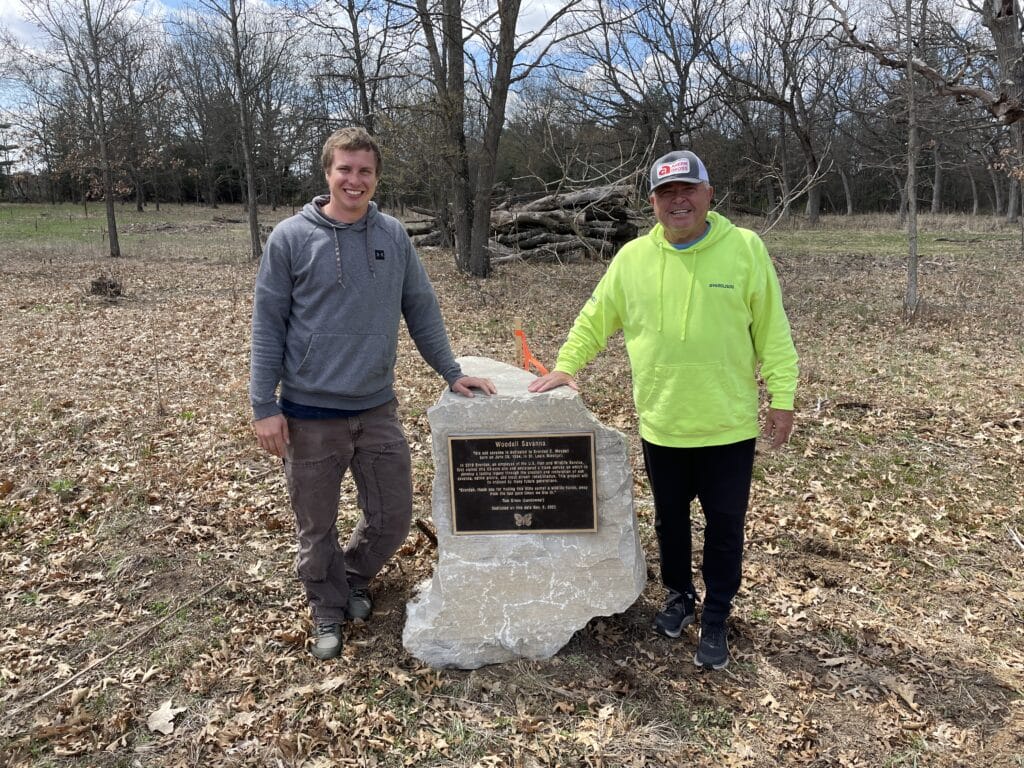
Once they were happy with the progress on dry land, Woodall and Gross turned their attention to the creek. The creek had some pools at the outside meander bends, but several banks were degraded. Most runs had a wide, flat channel bed, and overall, the creek lacked habitat diversity and channel complexity.
The men reached out to TU for advice, and plans were developed to install wood structures in the creek to mimic natural features and add the complexity that you would expect in a healthy stream.
Specific trees along the banks were felled into the creek to induce scour and deposition, to provide instream and terrestrial habitat and to promote floodplain connectivity. Tree trunks with root wads were pencil-tipped and driven into the bank, leaving the root wads in the creek to induce scour and create habitat complexity while also protecting banks.
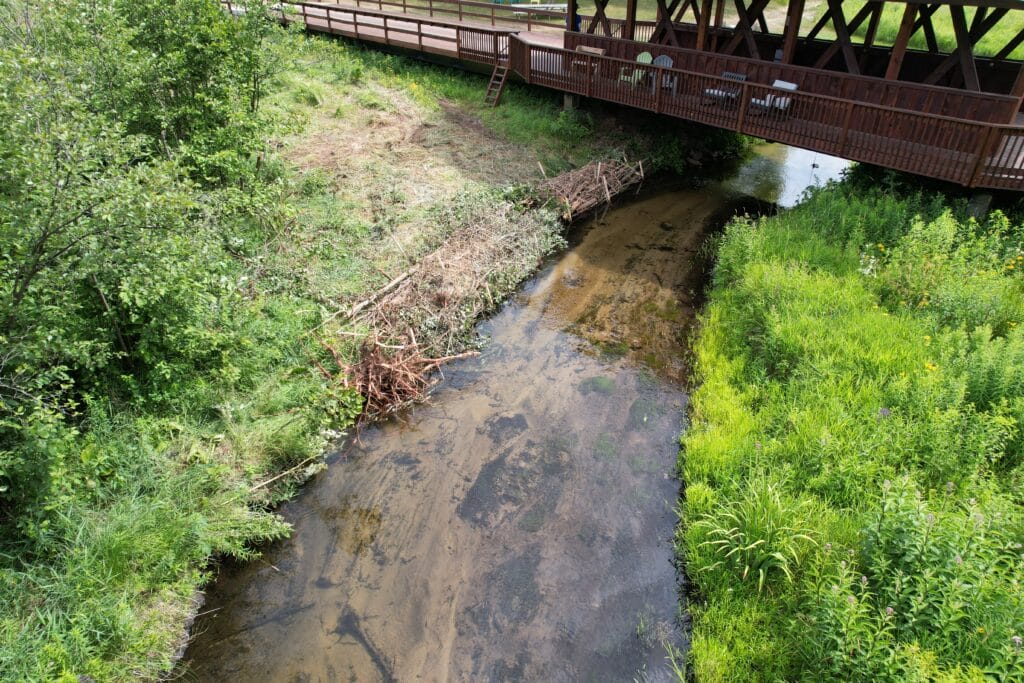
Brush bundles were used to restore channel banks with woody materials that offer aquatic and terrestrial benefits and narrow the channel. Tree trunks were scattered in a backwater to provide basking logs for turtles and habitat for frogs and other wetland species.
The project team was careful to consider potential impacts beyond improving instream habitat. It’s important to recognize that millions of people in Wisconsin use our creeks and rivers for canoeing, kayaking and boating, so the installed woody features were not channel-spanning to allow for navigation.
Independent of the in-stream work, Gross installed a covered bridge to span the creek. He named it “Amy’s Bridge” to honor his sister, who passed away recently after battling ovarian cancer.
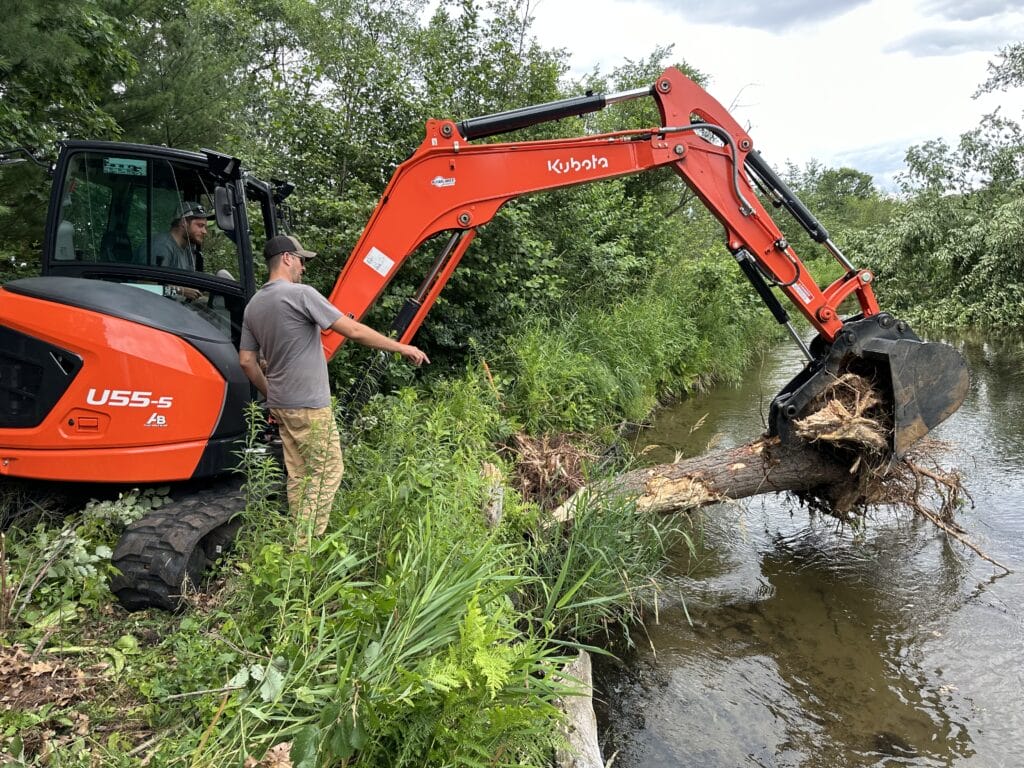
The installed features were limited in size to reduce impacts to water surface elevations during flood events. And while all anglers know the annoyance of having stream access impeded by downed trees, or the frustration of having your fly hung up on a log, we also know that fish love the habitat created by the wood and more habitat equals more and bigger fish throughout the creek.
While TU can help landowners obtain funding for stream improvement projects, including through many programs that fall under the Farm Bill, Gross covered the $14,000 cost of the stream work himself. He hopes the work will inspire his neighbors to undertake similar projects.
“A lot of people have the assets and want to leave a legacy of natural resources protection and enhancement,” he said. “They just might need some assistance from experts like those from the Fish and Wildlife Service and Trout Unlimited to get the work started.”
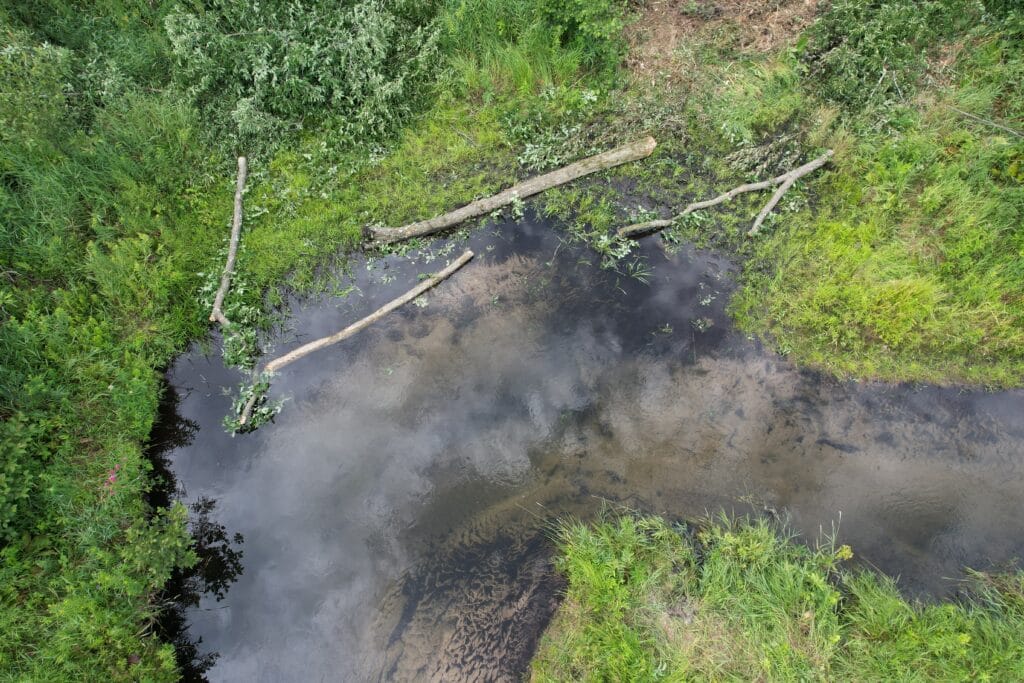
Trout Unlimited is thankful for our partners at the U.S. Fish and Wildlife Service – Partners Program for organizing this project. We’d like to give a special shout out to Brian and the habitat crew at Ideal Land Management for a fun three days working in the creek.
Most of all, we are truly grateful for Tom Gross, a forward-thinking landowner and active steward of our invaluable water resources who is leaving a legacy in this special region.
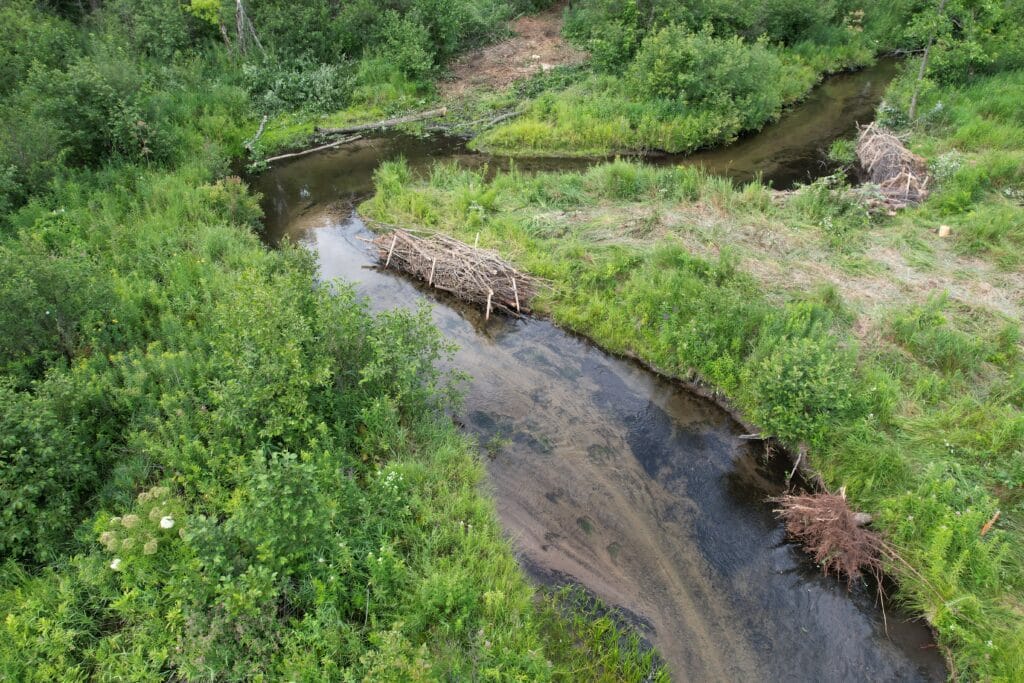
There remains a widespread belief in public discourse that our streams need to be “cleaned up” by removing all woody debris and creating a straight, uniform channel. But woody debris should not be an irritation to humans; it is essential for a healthy aquatic environment, and we believe that balance can be achieved for the benefit of fish, wildlife and humans.
Scott Allen is a Great Lakes stream restoration specialist. Jamie Vaughan, TU’s Great Lakes engagement coordinator, and Mark Taylor, TU’s eastern communications director, contributed to this article.



